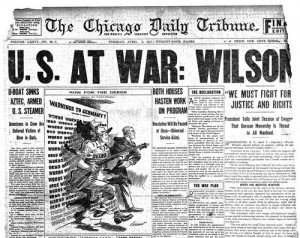As the demand increased for news in the late 19th and early 20th centuries, there was a growing need for businesses and other individuals in the public eye to focus on the image portrayed by these outlets. One early public relations campaign that grew incredibly quickly during this time period was in support of men joining the army and of the first World War in general.
In 1917, President Woodrow Wilson created the Committee on Public Information. The group was specifically formed in order to manage the public’s perception of the American war effort at the time. They focused on various methods of spreading Wilson’s message and pushing for support from the public, including the now infamous propaganda posters, word of mouth and press releases.
They managed the news that the press shared about the War through their own writing. Each day, the CPI released a special newspaper called “Official Bulletin” and sent it to various news organizations. They most often focused on positive stories and aspects of America’s involvement in order to keep the public’s spirits up and the approval of the war high.

http://www.authentichistory.com/1914-1920/2-homefront/1-propaganda/Poster-Uncle_Sam-I_Want_You-James_Montgomery_Flagg.jpg
Although the committee’s goal was a positive one, this period is a strong example of the power that media was beginning to obtain over the public’s opinion. This trend continues moving forward, causing sensational stories to spread virally across communities. We can still see its effects today whenever a press conference is held following a major event.


Leave a response